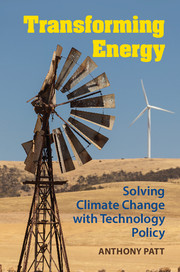PART 2 - FAILED STRATEGIES TO REDUCE EMISSIONS
Published online by Cambridge University Press: 05 July 2015
Summary
The need for a set of policies to address climate change by reducing or even eliminating greenhouse gas (GHG) emissions has been recognized for close to thirty years now. A watershed year was 1988, a time when the United States could still claim leadership with respect to environmental policy. An exceptionally hot summer across much of the country, with wildfires raging in the west, appeared to confirm fears that this newly identified phenomenon, global warming, might actually be real and might endanger people. Congress held hearings, inviting the leading climate scientists to testify. It appeared that a domestic solution would soon be found, just as domestic solutions had been found for local air and water pollution or the problems of toxic waste. At the global level, the United Nations General Assembly moved toward the idea of an international treaty to solve the problem in the tradition of acid rain or stratospheric ozone loss.
Jumping forward to the present, one could be forgiven for thinking that none of that happened. When we compare action on climate change with so many other things, the differences are striking. In those years since 1988, we have gone from a world largely without email to one in which the Internet seems universal. The Berlin Wall has fallen, and most of the former communist countries in Eastern Europe have become integrated with the West. Apartheid has ended in South Africa. Global attention to poverty reduction has made a profound difference. But GHG emissions are higher than ever, and, indeed, their rate of growth has increased in the past decade.
Why have the efforts to address climate change apparently been so singularly ineffective? What I argue here is that the strategies that people proposed back in 1988, and which society has tried to follow through on ever since, were the wrong ones for the task.
- Type
- Chapter
- Information
- Transforming EnergySolving Climate Change with Technology Policy, pp. 53 - 54Publisher: Cambridge University PressPrint publication year: 2015

